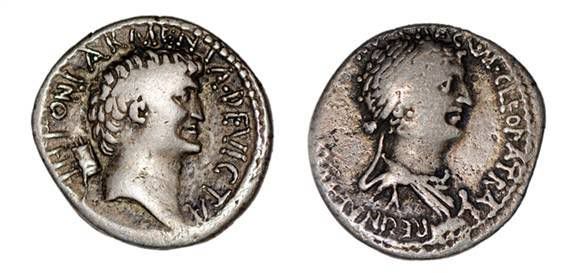
In short, a fair match for the hook-nosed, thick-necked Mark Antony on the other side of the coin, which went on public display Wednesday at the university's Shefton Museum.
"The image on the coin is far from being that of Elizabeth Taylor and Richard Burton," said Lindsay Allason-Jones, director of archaeological museums at the university, recalling the 1963 film "Cleopatra", which ignited the tempestuous romance between the two stars.
The notion that Cleopatra was not in Taylor's league was hailed as a revelation in British newspapers on Valentine's Day, though the image is hardly a discovery.
Replicas of the denarius can be found on eBay, and images on other ancient coins are no more flattering.
Cleopatra's legend has grown over the centuries.
Plutarch, in the "Life of Antony" written a century after the great romance, said of Cleopatra: "her actual beauty, it is said, was not in itself so remarkable that none could be compared with her."
"But the contact of her presence, if you lived with her, was irresistible; the attraction of her person, joining with the charm of her conversation, and the character that attended all she said or did, was something bewitching. It was a pleasure merely to hear the sound of her voice ..."
Chaucer, writing in the 14th century, described her as "fair as is the rose in May."
Shakespeare outdid them all: 'Age cannot wither her, nor custom stale her infinite variety; other women cloy the appetites they feed, but she makes hungry where most she satisfies.'"




No comments:
Post a Comment